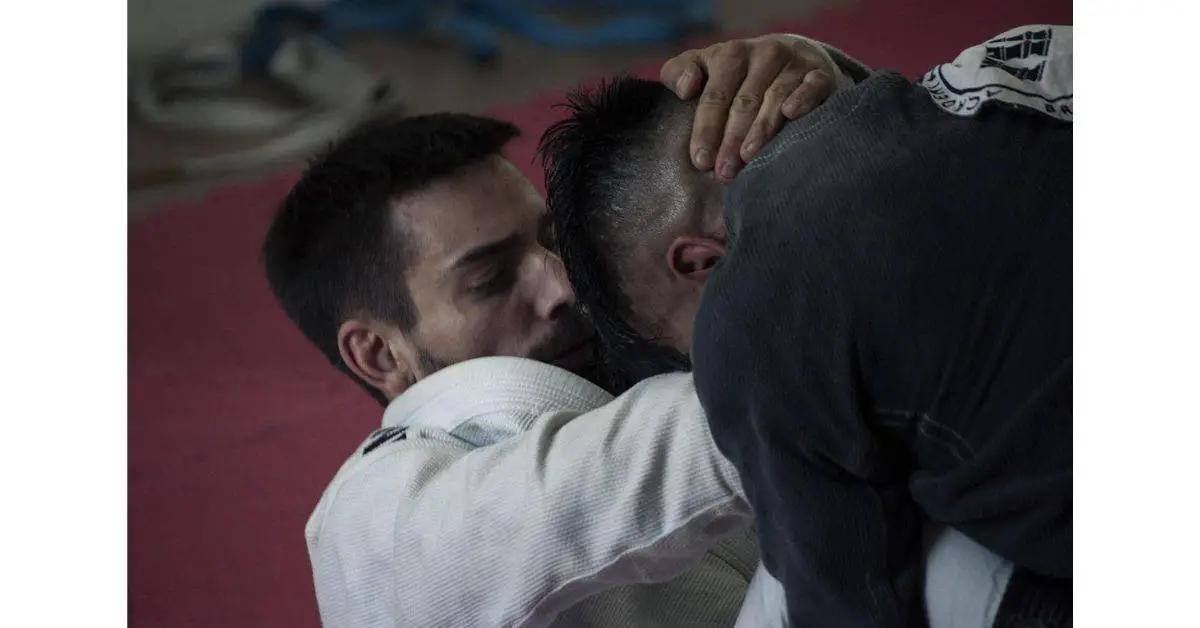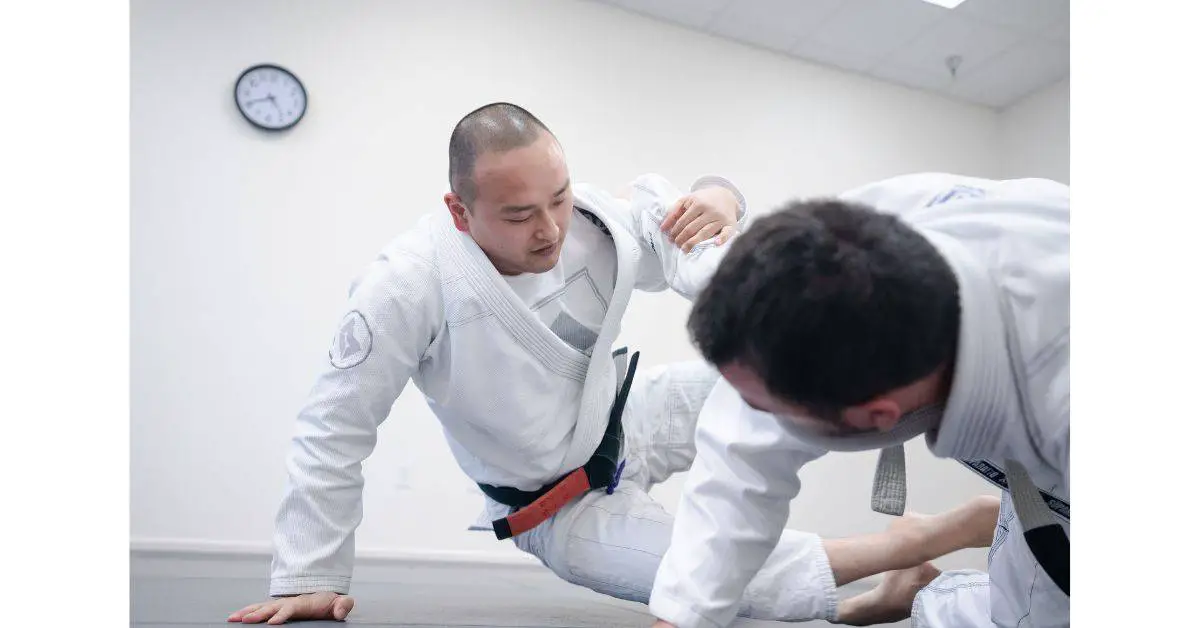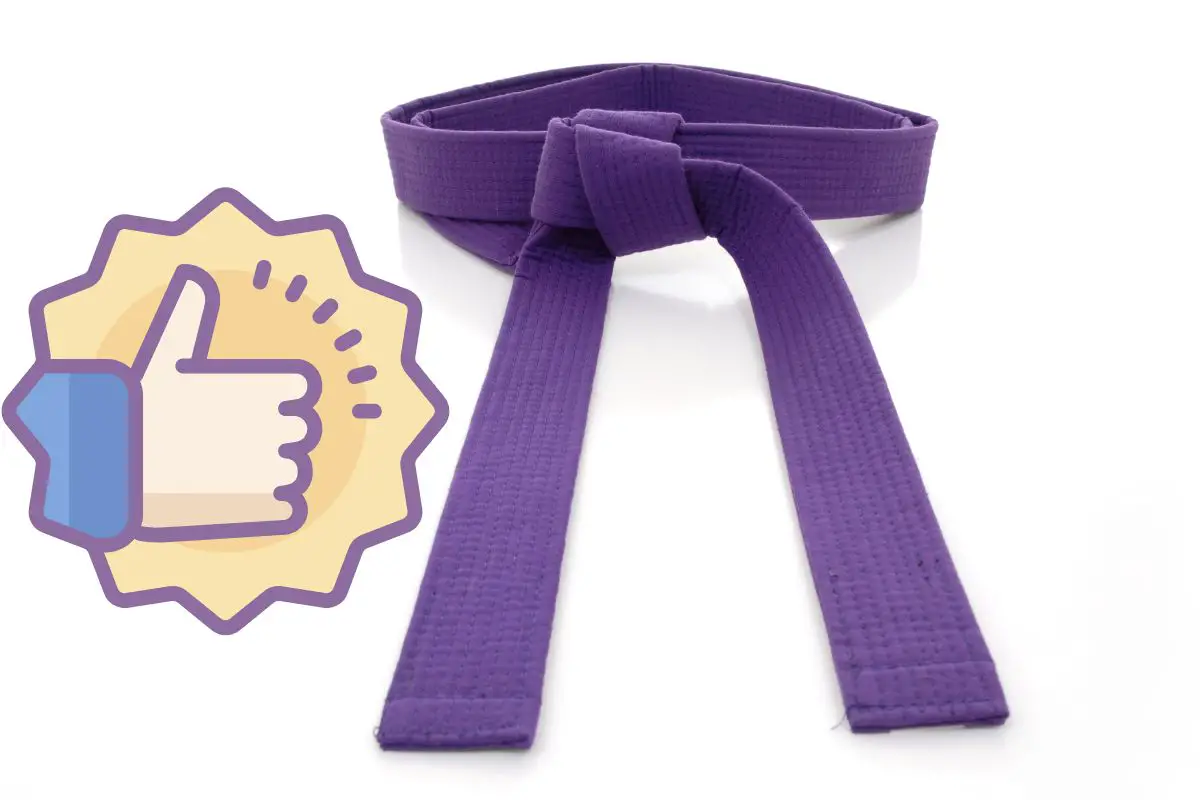Purple belts in BJJ (Brazilian Jiu-Jitsu) are competent fighters. They will be able to submit to bigger people than them who haven’t grappled in their lives. They’ll toy with them, as their BJJ skills are up there. Likewise, they can maneuver and control their opponents to ensure their victory.
But there’s a problem.
You’ll always have motivation issues when you reach the halfway point. In this case, you’re halfway to the black belt. So, therefore, reaching the BJJ purple belt can be quite a demotivating experience, although we think it’ll have the opposite effect.
Alright, let me clarify before moving on.
Purple belts in BJJ are more than competent. They know how to use the dominant positions and submissions to control and submit their opponents, especially lower-level belts. However, many will experience motivation and dedication issues, as reaching the halfway point will cause such problems.
This is the paradox we’ll see many times in our lives. However, we can implement various tricks to face such issues. I’ll list them in this article, so stay tuned for that.
Are purple belts in BJJ suitable?
This first part of the article will examine whether a BJJ purple belt is even a good grappler. The first thing that comes to mind is, well, of course. However, this might not be the case. Let’s see why.
Purple belts in BJJ are good grapplers who can put up a fight and submit the average person on the street whenever they want. However, their advanced skills are still not as good as brown and black belts (obviously.) Therefore, they have more to learn before beating anyone on the street.
Let’s say a purple belt is about to face someone much bigger than him in self-defense. The opponent approaches him and starts punching and kicking our BJJ trainee in the face and body.
The BJJ purple belt closes the distance and grapples the guy in one motion. Now, he can get almost any dominant position by using the techniques he learned. For example, he might get a full mount or side control. So now, he controls the opponent (although he might have gotten hit a few times.)

BJJ purple belts know how to do that. They know how to maneuver themselves and their opponents in accordance with what they want to achieve.
They’ll do just that if they want to get the opponent into side control.
To clarify, a BJJ purple belt is a good fighter, especially against a non-grappler.
Why BJJ purple belts can fight
Before reviewing the negative aspects of being a BJJ purple belt, let’s see the 3 primary reasons why they can fight and fight hard.
They know how to maneuver themselves and their opponents according to their goals. If they don’t want to cause unnecessary injuries, they’ll get into the full mount position and control their opponents.
What can you really do in the bottom position in the next few minutes if you have an advanced BJJ trainee controlling you? The answer is nothing, really.
#1 – They’re halfway to a black belt
The first reason why they’re competent fighters is that they’re halfway to a black belt. Logically, there is no way someone who has trained for numerous years will still be incompetent.
Purple belts know how to use what they learned to cause massive damage and submit the opponent swiftly.
A black belt also knows how to do that, but with more mastery and skill. One has practiced for about 10 years in Brazilian Jiu-Jitsu, so he has mastered all the basics and many advanced skills along the way.
Now a purple belt in BJJ has mastered some basics but has more to strive for before reaching this graceful rank. However, he’s halfway there, so he’s a good fighter; this is a no-brainer.
#2 – They know the basics & advanced techniques
The 2nd reason a purple belt in any grappling-based martial art will be a good fighter is that they already know the basics and advanced techniques.
They don’t only know them, but they also know how and when they’re most suitable to use. As a result, they’ll be able to easily submit their opponents, especially if they have no martial arts experience (like most people in self-defense situations.)

#3 – They’ve sparred countless times
The last reason we’ll review in this article is that BJJ purple belts have sparred countless times. So by now, they’re familiar with how getting submitted or sparring with someone much bigger than you feels.
They have experience.
Experience is the key term here because it’s the most critical attribute to have as a fighter. Learning the skills and gaining knowledge is essential, but it won’t get you to an excellent fighting level.
What you need is experience. As such, sparring will be what you want to focus on if you want to become a good, capable fighter. And, trust me, purple belts have already sparred countless times.
How long does it take to get a purple belt in BJJ?
Advancing through BJJ ranks might be your goal. While I’m not an advocate for setting your goals with something you can’t control, it can be a material goal you can set your eyes to. And, frankly, it might work for you and keep you consistent and dedicated in your training.
It can take anywhere from 2-5 years to get a BJJ purple belt in most gyms. However, it can also take longer than that, as you’ll need to be skilled enough to reach it. This is unlike the previous belt, the blue one—which is less about skill and more about consistency and basic progression.
You’ll need to be skilled enough to progress to it. That’s why you always want to keep gaining knowledge and practicing what you learned.
While learning is essential, it’s only half the process. You also want to implement what you have learned and get better.
The BJJ purple belt paradox – Why many of them quit
How is it possible that grapplers who have already reached such a high rank will end up leaving and throwing their progress thus far into the trash? How can someone do that with a clear conscious?
The halfway mark is an issue humans always face (I do as well!) I know myself too well right now to deny experiencing these issues myself. So, let me be honest with you.
Once you reach the halfway point in any area of your life you’re working toward a specific goal, such as getting the BJJ purple belt, you’ll suddenly be less motivated than ever. You wouldn’t want to attend training and feel you have no goals to progress and work toward.
This is the paradox of the purple belt. First, you’ll see people advance through the white and blue belts, which might take years. And then, they finally reach this beautiful color, purple. Then, however, they lose all motivation and quit their initial dreams of becoming black belts soon after.

Don’t get me wrong, these grapplers who have quit changed their lives. They got countless benefits, both mental and physical. They’ve also become competent fighters. However, why stop there?
Implement the tips I’ll review soon in this article to ensure you keep progressing quickly when you’re a purple belt. Stay tuned for that.
What does it mean to be a BJJ purple belt?
A BJJ purple belt has demonstrated a willingness to improve and excellent grappling skills simultaneously. A grappler who reached such a rank knows how to maneuver himself and his opponent to submit them. Purple belts can force the average person to submit and tap out in a few seconds.
Is a BJJ purple belt dangerous?
Being a purple belt is a symbol of your dedication and consistency. You have built yourself up from scratch until the point where your gym trusts you with this rank. That’s unlike the blue belt, which doesn’t require you to be at a certain skill level; instead, showing consistency is the only step you need.
BJJ purple belts are more than competent and dangerous fighters who can maneuver themselves and their opponents according to their goals. For example, if they want to force their opponent to tap out, they’ll get into a dominant position, such as side control, and follow up with a submission, such as the Kimura.
The average purple belt grappler knows much more techniques, of course. They’re more likely to know all the basic submissions to a great extent, such as these submissions:
- Guillotine Choke
- Triangle Choke
- Kimura
- Americana
- Rear Naked Choke
- Straight Arm Lock
- Armbar
- Wrist Lock
And they also know to pass the opponent’s guard using the following guard passes:
Of course, they can use the following dominant positions to ensure their opponents stand no chance against their grappling abilities and maneuverability:
If you want to learn any of these techniques yourself, follow every link to read about the individual technique/guard pass/position it points to.
But, in short, that’s why a BJJ purple belt is more than dangerous.
Can a BJJ purple belt win in a street fight?
A BJJ purple belt can win in a street fight because he knows how to use his opponent to force him to submit eventually. He can use submissions and passes to get into a dominant position over his opponent and finish the fight. For instance, the BJJ trainee will likely attain side control or full mount.
How many BJJ purple belts are there?
A rough estimate will be 17,500 BJJ purple belts out of 350,000 BJJ trainees. While specifying the number of purple belts in BJJ is impossible, about 5% of all BJJ trainees will end up attaining the mighty purple belt. Also, about 10-20% will hit the blue belt. But, then, more than half will quit along the way.
How to progress faster as a BJJ purple belt?
Alright, you’ve made it to one of the most important sections. Most people who clicked on this article are out by now. However, you have here the information you want to keep in check when thinking about reserving your progression rate in your BJJ journey.
Alright, enough introduction: here’s how to progress faster as a BJJ purple belt.
Tip #1 – Setting small milestones
The first tip is to set small milestones. You will get demotivated because you’ll keep thinking about the mighty black belt. However, this will not help you as much, as the halfway paradox applies here.
Setting small milestones is critical when you want to overcome the primary obstacle you’ll face. For example, you can aim to reach the brown belt as soon as possible.
You can go even smaller than that by setting your goal to learn a new technique. Likewise, you can focus on mastering a position, such as the open guard position.
You see, many are the paths you can set your eyes to. So, don’t stay fixed on having your goal to reach your black belt.
Tip #2 – Don’t look too far ahead in the future
The next tip is to keep your eyes on the present and near future. You want to avoid looking at your journey as a whole, as that will demotivate you. The halfway paradox is a real thing.
I know what you think: I won’t be demotivated once I reach the purple belt. But I’m confident that most BJJ grapplers (more than 70%) will become highly demotivated and want to quit once they overcome the two primary obstacles for beginners, the white and blue belts.
More than half of blue belts quit BJJ after working so hard and dedicating a lot of free time to BJJ training. How is this possible? That’s because they’ve lost their purpose, which was advancing through the white belt.
Tip #3 – Find your true purpose
And the last tip is to find your true purpose. This is one I encourage you to implement in all your doings. My purpose for this website is what kept me consistently writing for 2 years. Your purpose has to be something you truly care about, such as improving yourself.
My purpose with this website is to get more people into martial arts. So, I wake up early every morning and write for an hour. I’m willing to do it because I have this purpose in mind.
You can boost your consistency by finding your purpose. However, this might provide more difficulty than you can currently imagine. Therefore, don’t be scared of taking time for yourself to think this through. It might take numerous months to find your true purpose.
It took me 12 months to realize that’s what I wanted to do in my life.
Here are some ideas for purposes you can adopt as a BJJ purple belt:
- Improving yourself
- Bettering your physical shape
- Reaching the brown belt
- Becoming mentally tougher
- Learning to fight
- Being able to defend your loved ones
- Becoming more responsible for your life
- Reducing your stress and aggression levels
- Learning a traditional martial art
- Enjoying life
- Living a more fulfilling and satisfying life
- Bettering yourself to make the people around you eventually better
And these are just from the top of my mind; there are countless more you will think about along your journey. The important thing is to adopt one you genuinely care about and start dedicating your training to this purpose.
You will progress so much faster that way.
Is a BJJ purple belt tough?
A BJJ purple belt is a tough fighter since he has sparred and fought other trainees countless times. Thus, the feeling of pain is second nature to him, particularly submissions, chokes, and all types of uncomfortable grappling positions. As a result, he’s a tough fighter and person.
Can a BJJ purple belt teach?
A BJJ purple belt can teach, as he thoroughly knows the basics and advanced techniques. The side coach in many grappling gyms will be a purple/brown/black belt. But, one cannot be the main coach, as he hasn’t mastered all the basic positions, submissions, and passes yet.
How much time will I stay a purple belt in BJJ?
While official guidelines recommend that trainees spend at least 18 months in the BJJ purple belt, some don’t progress until they’ve spent 5 years in it. Yes, 2-5 years is what many Jiu-Jitsu trainees spend before progressing to the next color, the mighty brown belt.
And if you want to learn more about BJJ’s belt ranking system, follow this link.
Final words
Writing this article was a blast for me. I know it might have been challenging to follow along with this sort of Q&A article, but it was what I saw as most suitable for this topic.
If you’re currently a purple belt, congratulations on your progress. I’m proud of you for investing much time and effort into this beautiful martial art.
Hopefully, you’ve understood what purple belts are good at and the disadvantages of being in this position. Many purple and blue belts quit because of this halfway paradox.
You must find a new purpose to hold on to if you desire to reach the mighty black belt eventually.
The most important thing is for you to keep bettering yourself. So let me wrap this article with one question: how can you better the world without having bettered yourself first?
And if you want to learn whether blue belts are dangerous grapplers, follow this link.
The Mighty BJJ Coral Belt – A Comprehensive Guide
BJJ Grandmaster – Who Are the Mysterious Red Belts?
BJJ Brown Belts – How Dangerous Are They?

